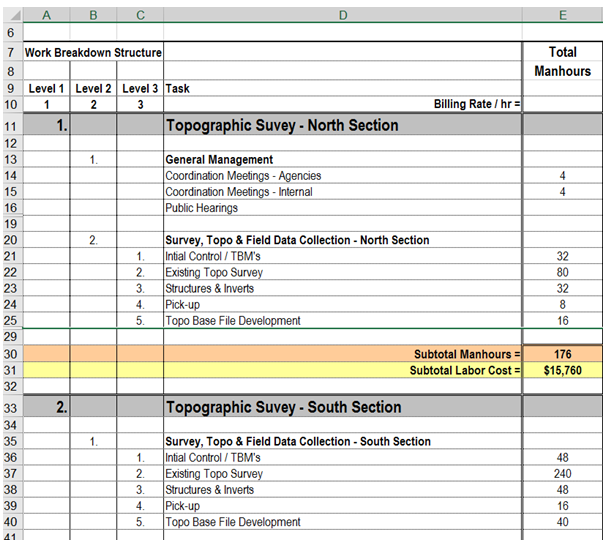Introduction
Dividing complex projects to simpler and manageable tasks is the process identified as Work Breakdown Structure (WBS).
Usually, the project managers use this method for simplifying the project execution. In WBS, much larger tasks are broken down to manageable chunks of work. These chunks can be easily supervised and estimated.
WBS is not restricted to a specific field when it comes to application. This methodology can be used for any type of project management.
Following are a few reasons for creating a WBS in a project:
Identifying the main deliverables of a project is the starting point for deriving a work breakdown structure.
This important step is usually done by the project managers and the subject matter experts (SMEs) involved in the project. Once this step is completed, the subject matter experts start breaking down the high-level tasks into smaller chunks of work.
In the process of breaking down the tasks, one can break them down into different levels of detail. One can detail a high-level task into ten sub-tasks while another can detail the same high-level task into 20 sub-tasks.
Therefore, there is no hard and fast rule on how you should breakdown a task in WBS. Rather, the level of breakdown is a matter of the project type and the management style followed for the project.
In general, there are a few "rules" used for determining the smallest task chunk. In "two weeks" rule, nothing is broken down smaller than two weeks worth of work.
This means, the smallest task of the WBS is at least two-week long. 8/80 is another rule used when creating a WBS. This rule implies that no task should be smaller than 8 hours of work and should not be larger than 80 hours of work.
One can use many forms to display their WBS. Some use tree structure to illustrate the WBS, while others use lists and tables. Outlining is one of the easiest ways of representing a WBS.
Dividing complex projects to simpler and manageable tasks is the process identified as Work Breakdown Structure (WBS).
Usually, the project managers use this method for simplifying the project execution. In WBS, much larger tasks are broken down to manageable chunks of work. These chunks can be easily supervised and estimated.
WBS is not restricted to a specific field when it comes to application. This methodology can be used for any type of project management.
Following are a few reasons for creating a WBS in a project:
- Accurate and readable project organization.
- Accurate assignment of responsibilities to the project team.
- Indicates the project milestones and control points.
- Helps to estimate the cost, time and risk.
- Illustrate the project scope, so the stakeholders can have a better understanding of the same.
Identifying the main deliverables of a project is the starting point for deriving a work breakdown structure.
This important step is usually done by the project managers and the subject matter experts (SMEs) involved in the project. Once this step is completed, the subject matter experts start breaking down the high-level tasks into smaller chunks of work.
In the process of breaking down the tasks, one can break them down into different levels of detail. One can detail a high-level task into ten sub-tasks while another can detail the same high-level task into 20 sub-tasks.
Therefore, there is no hard and fast rule on how you should breakdown a task in WBS. Rather, the level of breakdown is a matter of the project type and the management style followed for the project.
In general, there are a few "rules" used for determining the smallest task chunk. In "two weeks" rule, nothing is broken down smaller than two weeks worth of work.
This means, the smallest task of the WBS is at least two-week long. 8/80 is another rule used when creating a WBS. This rule implies that no task should be smaller than 8 hours of work and should not be larger than 80 hours of work.
One can use many forms to display their WBS. Some use tree structure to illustrate the WBS, while others use lists and tables. Outlining is one of the easiest ways of representing a WBS.

